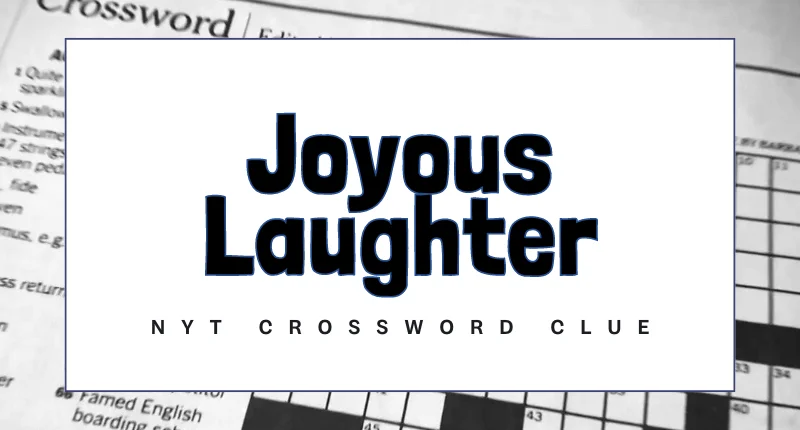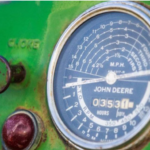Introduction to the New York Times Crossword
If you’ve ever found yourself immersed in the delightful world of puzzles, you’re likely familiar with the New York Times Crossword. It’s not just a test of your vocabulary or trivia knowledge; it’s an experience that can brighten your day and bring about joyous laughter. Each clue is like a mini treasure hunt, inviting you to think outside the box while tickling your funny bone. Imagine sipping your morning coffee, pencil in hand, as you unravel clever wordplay and quirky references—each solved clue sparking a smile or even an outright chuckle. The NYT Crossword has this unique ability to combine wit with whimsy, lifting our spirits one square at a time. Let’s dive deeper into how this beloved pastime fosters joy and laughter in our everyday lives!
The Importance of Laughter in Daily Life
Laughter is more than just a response to humor; it’s a vital part of our daily lives. It acts as a natural stress reliever, helping us cope with challenges and frustrations.
When we laugh, our bodies release endorphins, promoting feelings of happiness and well-being. This simple act can shift our perspective in an instant.
Sharing laughter strengthens social bonds too. Whether it’s with friends or family, those moments create lasting memories that enhance connections.
Incorporating humor into everyday life fosters resilience. A light-hearted approach can make even mundane tasks enjoyable.
Moreover, laughter has remarkable health benefits. It boosts immunity and may even improve cardiovascular health by increasing blood flow.
Embracing joy through laughter encourages creativity and problem-solving skills. When we lighten up, our minds open to new possibilities and ideas flourish effortlessly.
The Role of Humor in Crossword Clues
Humor in crossword clues transforms the ordinary into something delightful. It adds a playful twist to the challenge of solving.
When puzzlers encounter witty wordplay or clever puns, it’s more than just a clue. It’s an invitation to think outside the box and engage with words creatively.
Crossword creators often weave humor seamlessly into their designs. This can lighten even the most daunting grids, making them feel approachable.
A silly reference or absurd scenario can bring unexpected joy amidst moments of frustration. It turns brain exercise into pure entertainment.
Each humorous clue serves as a reminder that puzzles are not merely tasks but opportunities for laughter and fun. The right blend of wit makes every solved answer feel like a small victory filled with joyous laughter NYT enthusiasts cherish deeply.
Examples of Fun and Lighthearted NYT Crossword Clues
The New York Times Crossword isn’t just about serious brain workouts. It’s a playground of clever wordplay and whimsical clues.
Take, for example, the clue “Feline with Nine Lives.” The answer? “Cat.” Simple yet amusing. It invites a chuckle while prompting you to think outside the box.
Then there’s “What might be found in a doghouse?” The playful response is often “Bark.” A punny twist that adds levity to your solving experience.
Another delightful entry could be “Fruit that’s always in trouble,” leading you to “Peach,” as in “peachy keen” or in hot water. These lighthearted moments remind us that crosswords can tickle our funny bones while challenging our wit.
Even seemingly mundane clues can spark joy with their unexpected humor, making each crossword an adventure filled with laughter and surprises.
How Solving Puzzles Can Bring Joy and Laughter
Solving puzzles, especially crosswords, can unleash a wave of joy and laughter. Each clue presents an opportunity to flex your mental muscles while having fun.
As you dissect clever wordplay or uncover puns, the lighthearted spirit shines through. The satisfaction of cracking a tough clue is not just about getting it right; it’s about enjoying the journey.
The camaraderie that comes from sharing answers with friends adds another layer. Those moments of realization often lead to shared giggles over quirky clues or unexpected twists in language.
Moreover, humor in crossword puzzles invites us to think outside the box. It encourages creativity and highlights unique associations between words that we might overlook in everyday life.
Each completed puzzle becomes a tapestry woven with joyous revelations and delightful surprises waiting to be discovered anew every day.
Tips for Finding the Funny in Crosswords
To discover the humor hiding in your New York Times Crossword, approach each clue with an open mind. Look for puns or double meanings; they often lead to delightful surprises.
Don’t shy away from quirky references. Pop culture, celebrities, and current events frequently spice up clues with a dash of wit.
Pay attention to the constructor’s style too. Each crossword creator has their unique flavor of humor—some lean towards clever wordplay while others opt for lighthearted absurdity.
And remember, context is key! A seemingly straightforward clue might have an unexpected twist based on recent happenings or trends.
Don’t rush through it. Allow yourself time to savor the clues and enjoy those “aha!” moments when the laughter hits just right.
Conclusion: Embracing the Playful Side of Puzzle Solving
As you navigate the world of the New York Times Crossword, remember that it’s not just about filling in squares. It’s a delightful journey filled with clever wordplay and whimsical clues designed to spark joy. Embracing this playful side can elevate your puzzle-solving experience.
Finding those moments of joyous laughter NYT provides through humor-infused clues adds an extra layer of enjoyment engage with every clue like an invitation to a witty dance, where each answer reveals another step toward happiness.
So, as you delve into your next puzzle session, let laughter be your guide. Seek out the quirky connections and surprising twists within the grid. May each solved clue bring smiles and giggles along the way—celebrate the joyful spirit that puzzles bring into our lives!









